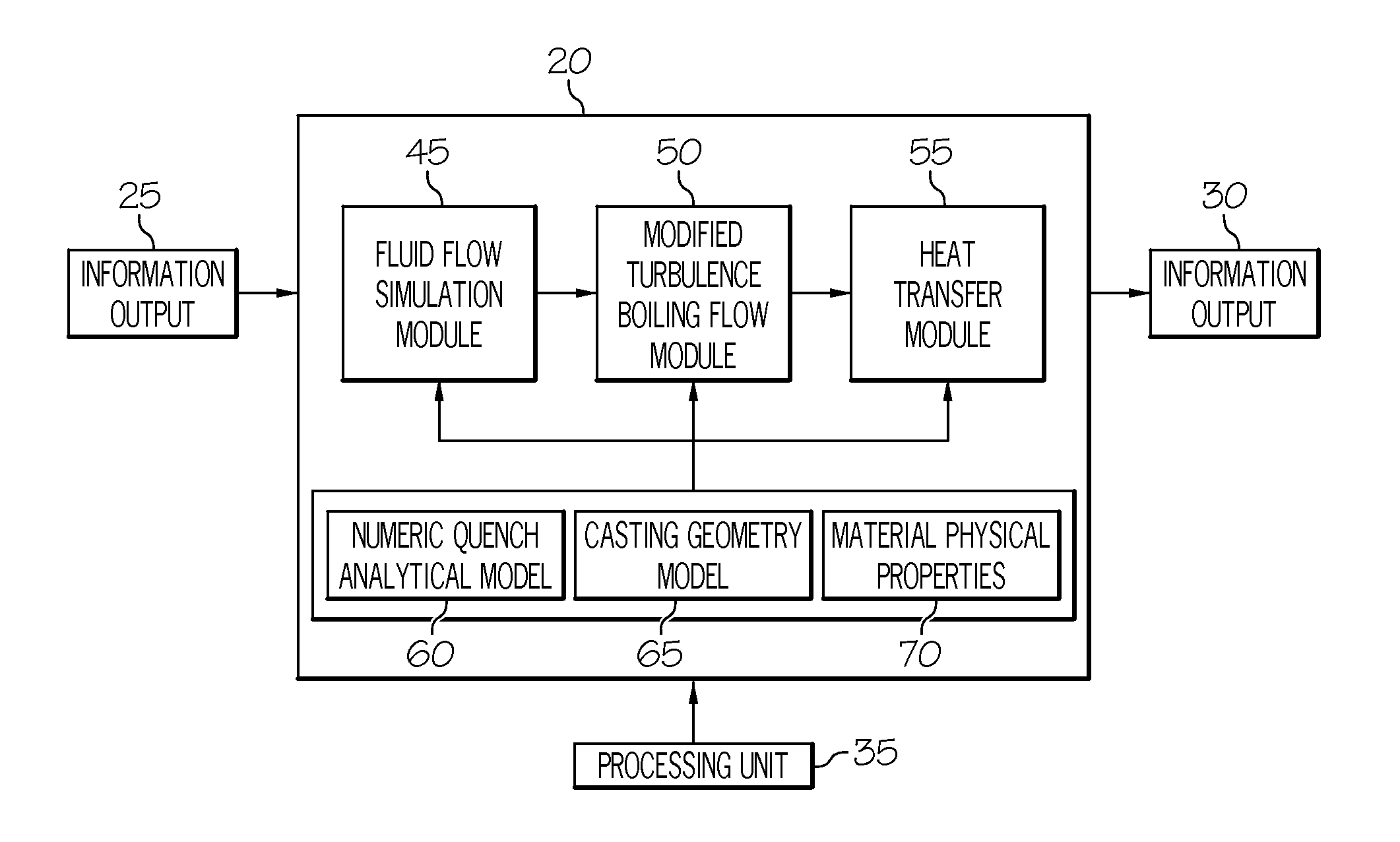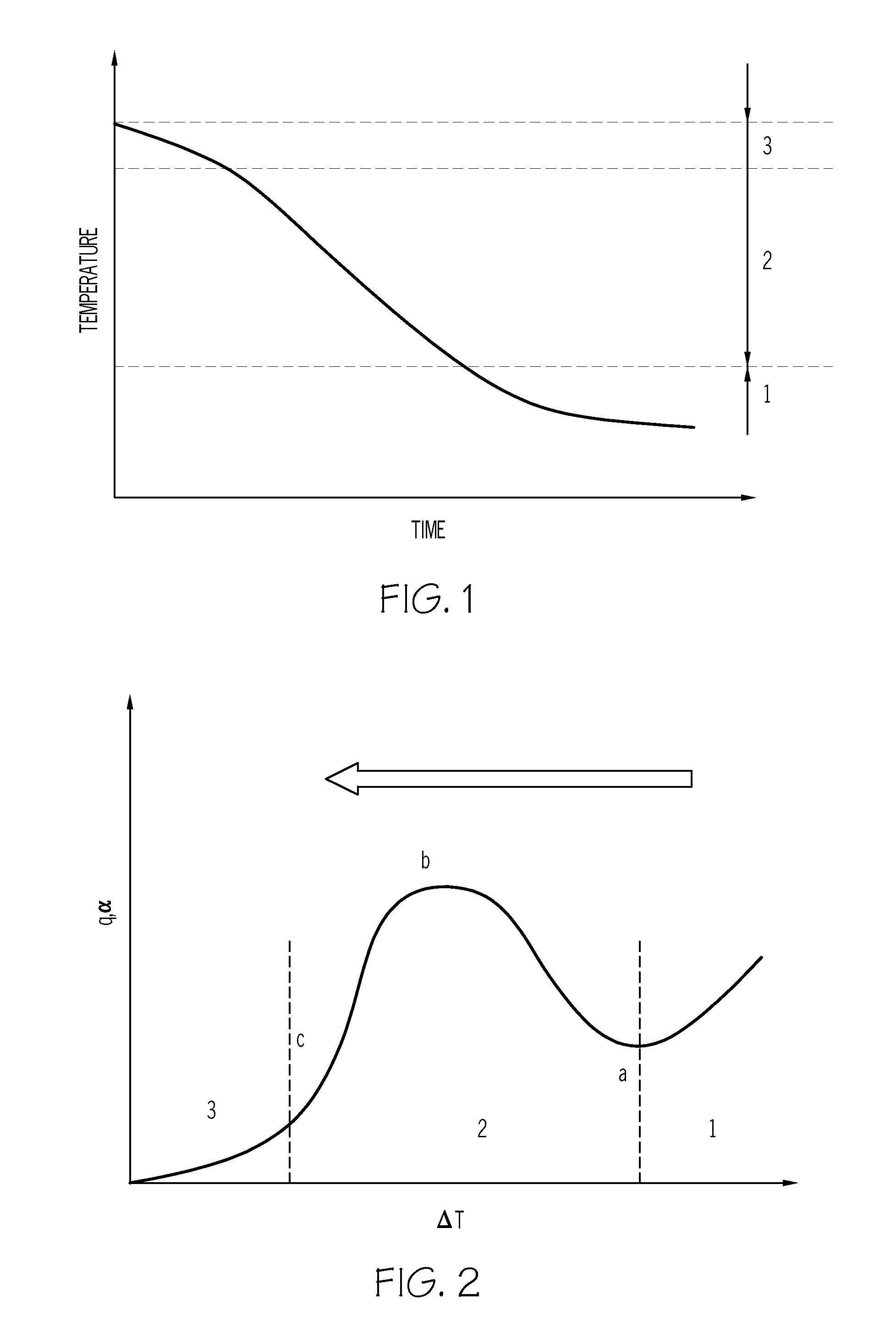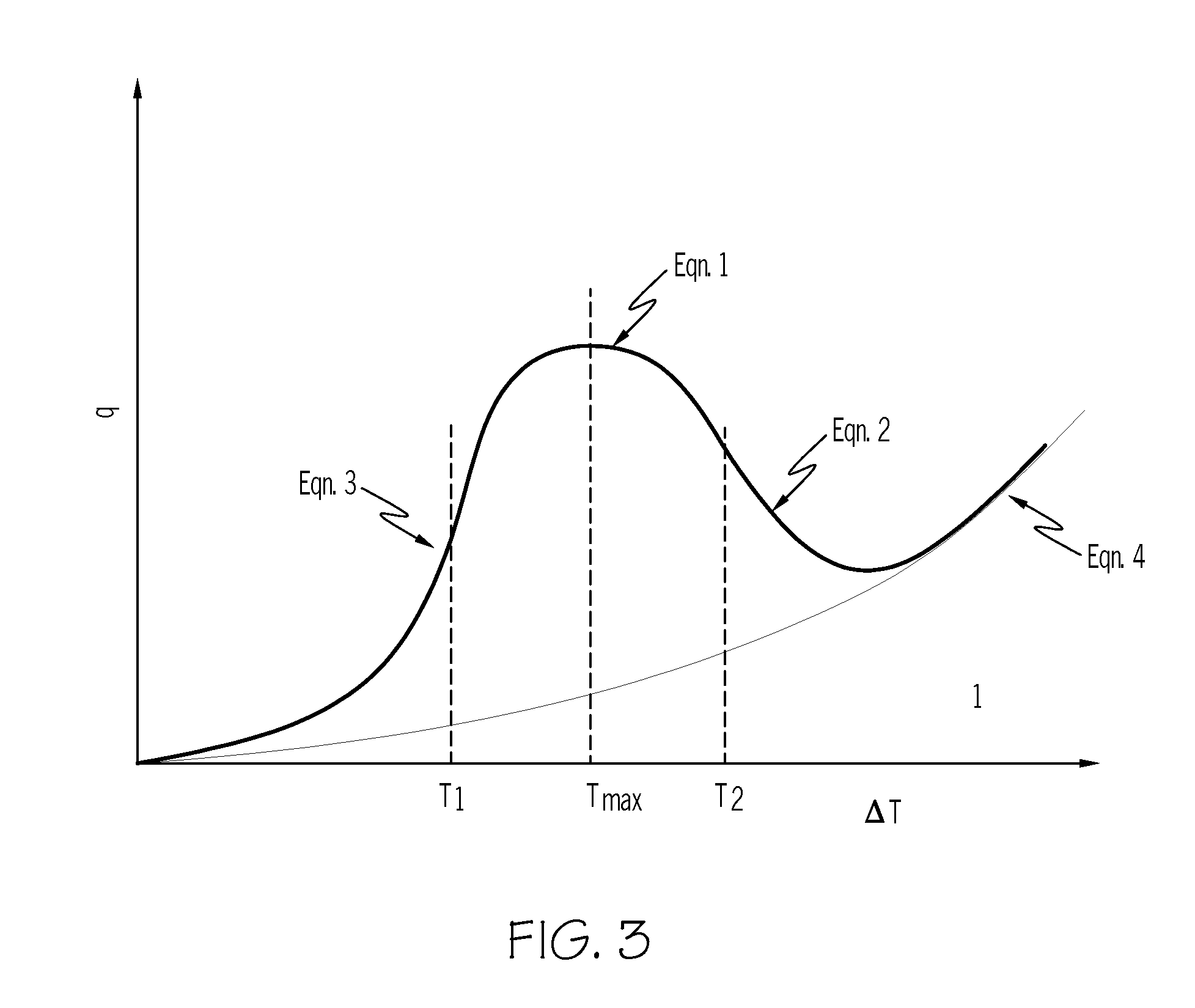Method for simulating transient heat transfer and temperature distribution of aluminum castings during water quenching
a technology of aluminum alloy and heat transfer, which is applied in the direction of heat measurement, heat treatment equipment, instruments, etc., can solve the problems of limited heat transfer by film boiling, and achieve the effect of accurate simulation of heat transfer
- Summary
- Abstract
- Description
- Claims
- Application Information
AI Technical Summary
Benefits of technology
Problems solved by technology
Method used
Image
Examples
Embodiment Construction
[0048]In water quenching processes, the heat transfer of hot metal objects to agitated water is generally considered to involve three main stages including film boiling, nucleate boiling, and convection. For cast aluminum components, however, it was discovered that the heat transfer in the transition boiling between film boiling and nucleate boiling dominates.
[0049]FIG. 5A shows the heat flux calculated from the cooling curves measured with 12 thermocouples instrumented in the picture-frame shape aluminum casting that was quenched vertically in warm water (74° C.). The position of the thermocouples is shown in FIG. 5B. Although notable differences can be observed in the heat transfer curves between the different thermocouples, the general trend is quite similar. For cast aluminum alloy (A356) solution-treated at 540° C., it was discovered that the heat transfer from nucleate boiling and in particular transition boiling is dominant. However, the film boiling is very limited. This is ...
PUM
| Property | Measurement | Unit |
|---|---|---|
| Temperature | aaaaa | aaaaa |
| Temperature | aaaaa | aaaaa |
| Length | aaaaa | aaaaa |
Abstract
Description
Claims
Application Information
 Login to View More
Login to View More - R&D
- Intellectual Property
- Life Sciences
- Materials
- Tech Scout
- Unparalleled Data Quality
- Higher Quality Content
- 60% Fewer Hallucinations
Browse by: Latest US Patents, China's latest patents, Technical Efficacy Thesaurus, Application Domain, Technology Topic, Popular Technical Reports.
© 2025 PatSnap. All rights reserved.Legal|Privacy policy|Modern Slavery Act Transparency Statement|Sitemap|About US| Contact US: help@patsnap.com



